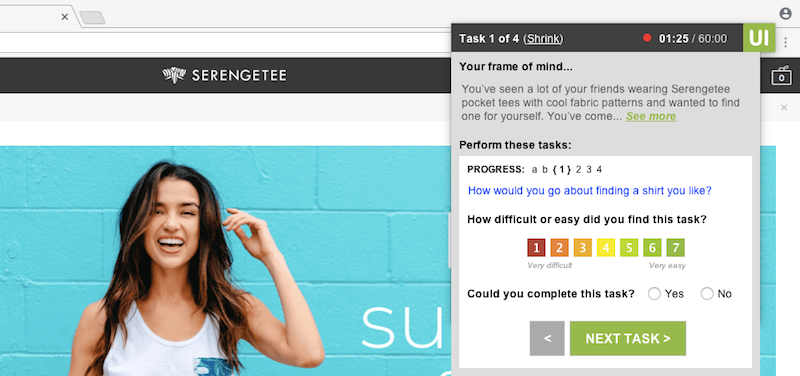
Many people use UX (user experience) design interchangeably with usability and user interface design. However, usability itself is a vital aspect of UX design. Good usability is necessary for creating products that can provide in-depth, relevant, and meaningful experiences to users.
That is to say, UX design is an umbrella term that includes a vast array of areas, and usability testing is just one. Testing is, however, a fundamental part of UX designing. It provides the guidance, inspiration, and validation that product teams need to design excellent products. That is why all effective and competent UX and design teams ensure that usability testing an integral part of the design process.
Let’s delve into the details and find out more about usability testing and its strategies.
What is usability testing?
Usability testing (AKA user testing) is a technique designers or researchers use to evaluate proposed methods or solutions for UX designs. They use the technique by testing it on potential, typically targeted and curated, users.
The irreplaceable usability test can assess and test how easily the target audience interacts with the proposed design. It also helps designers identify or spot problems that can cause friction.
UX researchers and designers have developed various techniques over time to evaluate and validate specific design decisions and product hypotheses. This can even include less product-specific aspects like branding, reputation, and marketing as well.
Common usability testing may include the following strategies:
Onsite usability testing
As the name suggests, this usability testing strategy requires a special environment (such as labs, meeting areas, rented spaces, etc.) and a moderator to supervise it. The moderator facilitates live users through tasks, answers their questions, and records responses in real-time.
It is better to have a trained moderator who knows how to handle live users. You can think of this strategy as something akin to a focus group, which requires time, money, and outside expertise.
Moderated usability testing
The strategy is more like an observation and interview method to help the product team get information regarding users’ experience. The evaluator watches a tester perform tasks or interact with a design. The evaluator (often someone from the UX team) can ask the tester some questions about their experience with the product at any time, or even guide them along in real time.
Unmoderated remote usability testing
Unmoderated remote usability testing, as the name implies, doesn’t need a moderator. But it can offer quick, inexpensive, and robust testing results for further analysis. In this usability testing strategy, participants complete tasks in a natural environment with their personal devices while a remote usability testing software records their screen, audio, and collects quantitative data.

Unmoderated remote usability testing is a more contemporary solution for most businesses due to its ease, flexibility, and inexpensiveness without sacrificing actionable results. Teams can send out tests to a user testing panel and then review the results later, making this usability testing strategy particularly appealing for teams on a deadline.
Guerilla testing
The simplest form of usability testing strategy involves going into various public places such as malls, cafés, and street markets to ask people about the first model. The technique requires a random selection of participation. People need to perform a usability test in exchange for a reward (a gift or a coupon).
This strategy is often utilized in the tech industry as a fast and inexpensive temperature reading for specific ideas, brands, and sometimes prototypes. Often, this is done in a niche setting, such as an industry-specific convention.
Summing up
All in all, usability testing observes and assesses users as they use the product or interact with a brand and its interface (such as the GUI). It helps them find the gaps and flaws in the product or spot the areas where the user struggles. Thus, the given details highlight some commonly used usability testing strategies in different scenarios.



